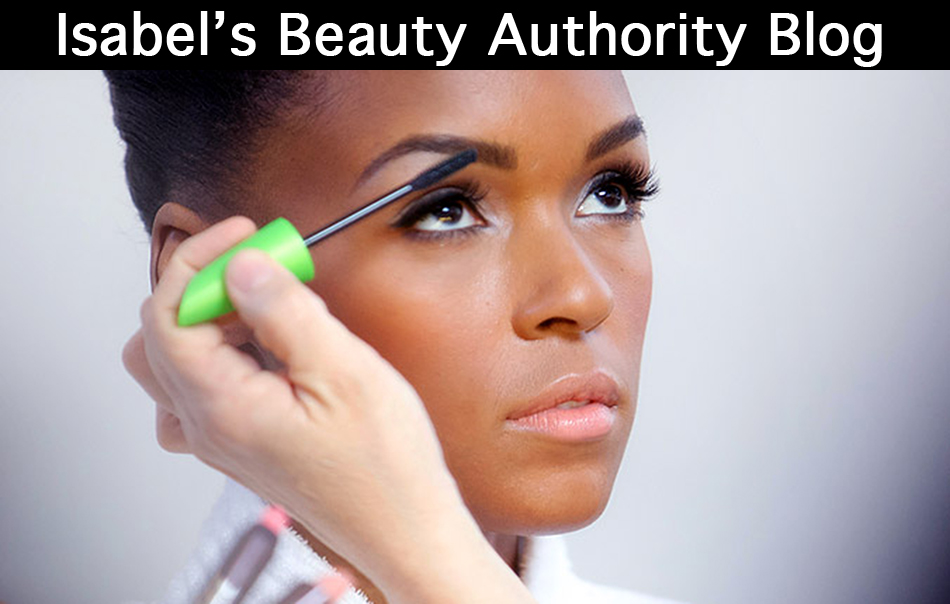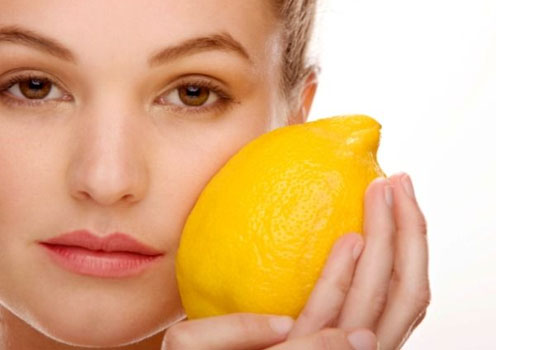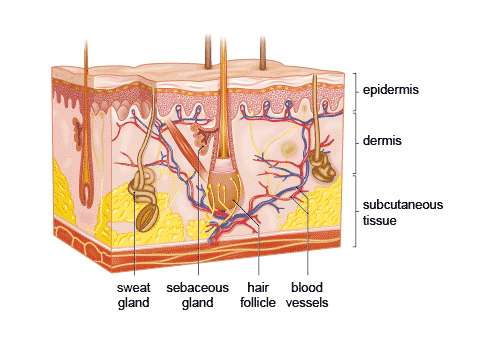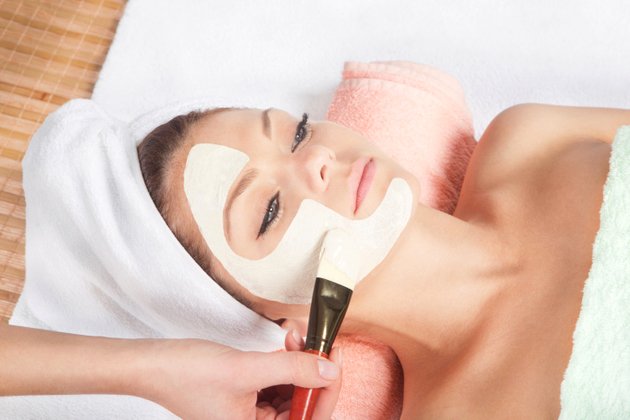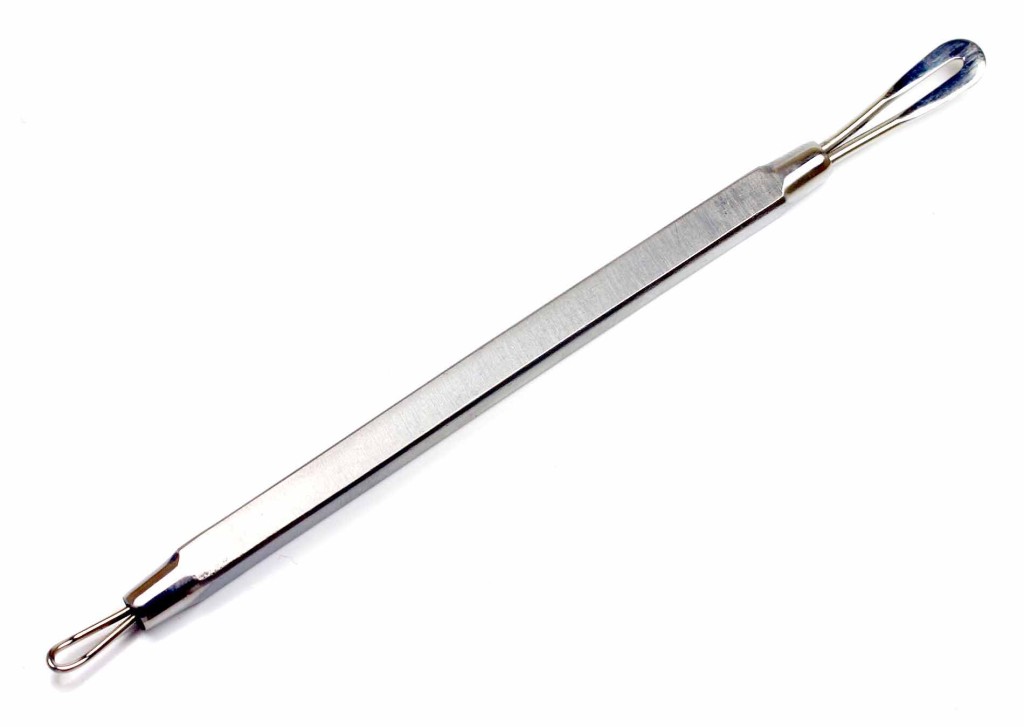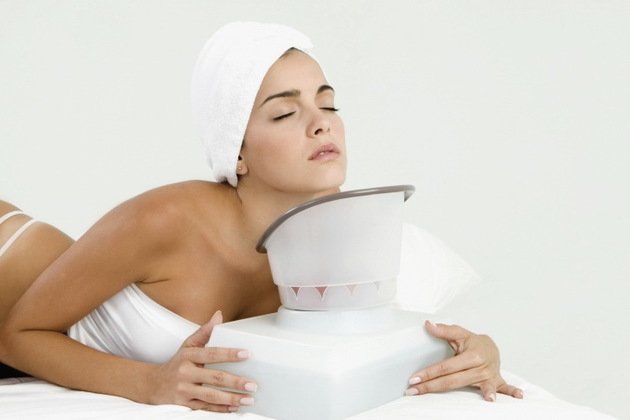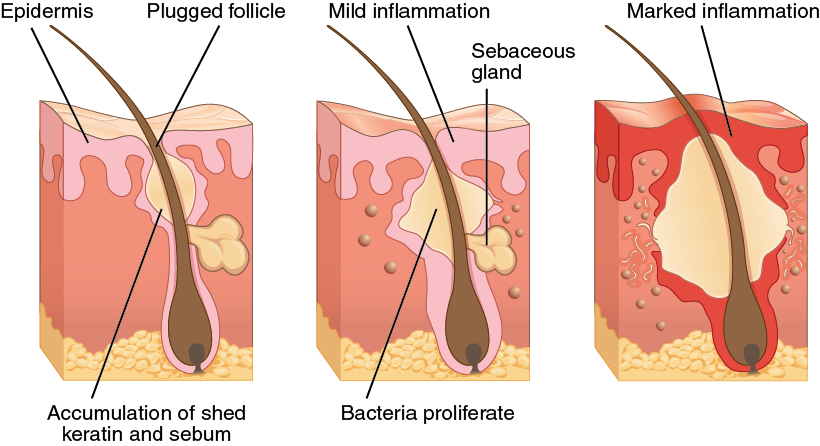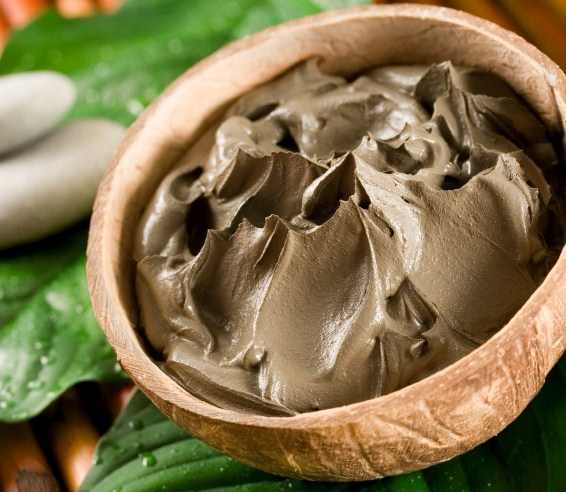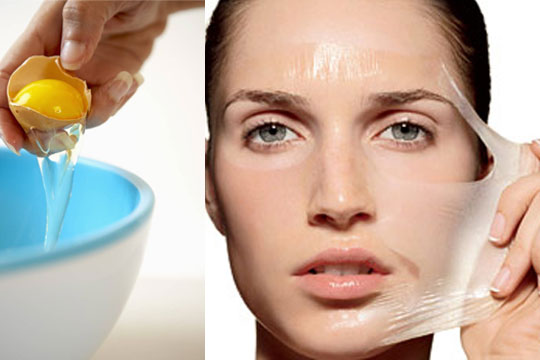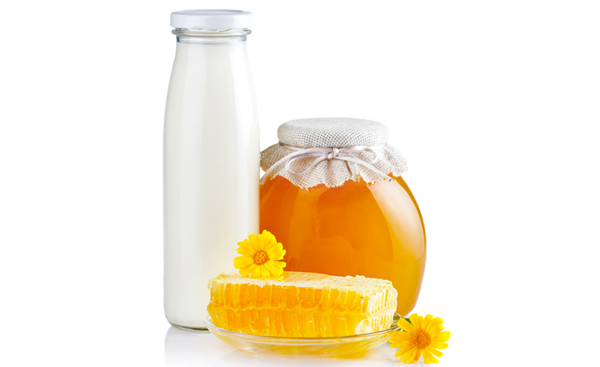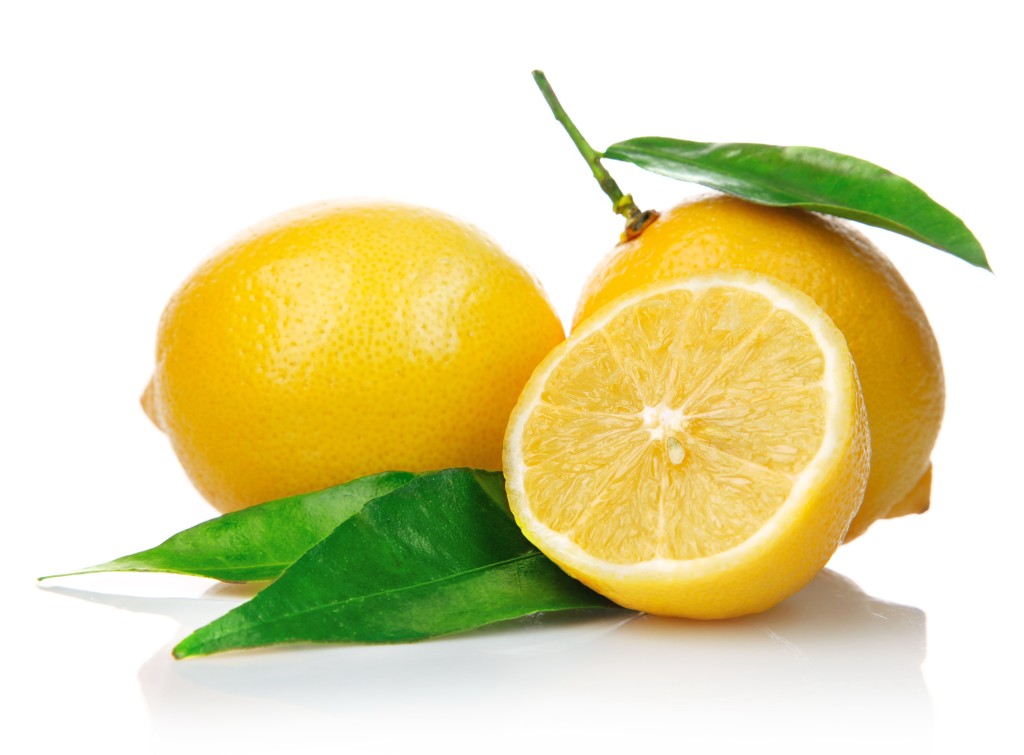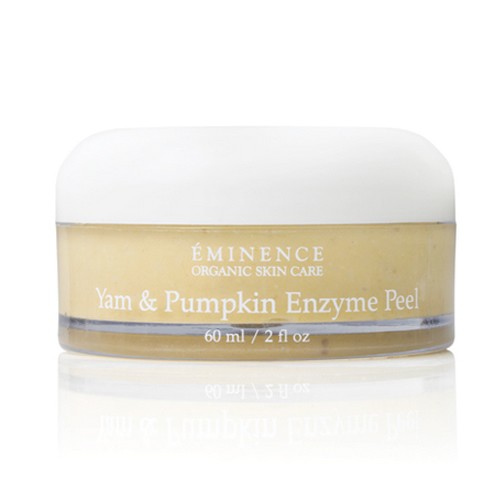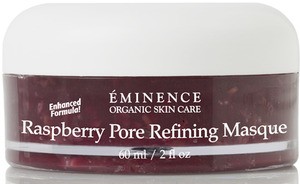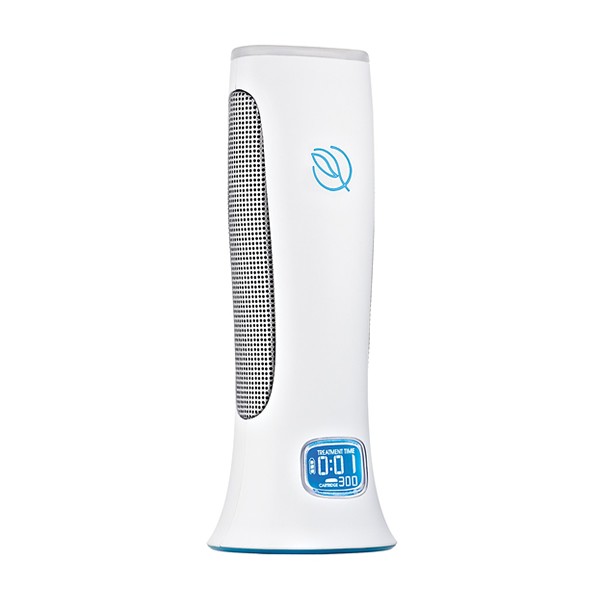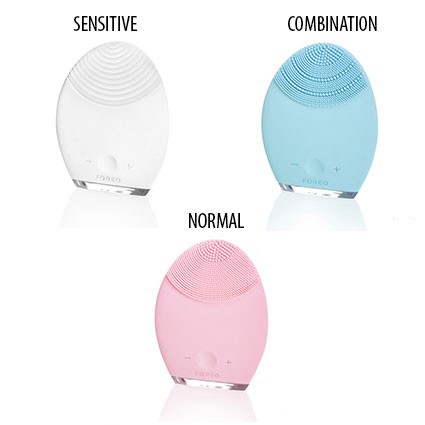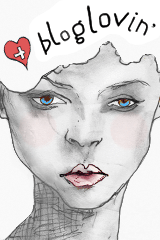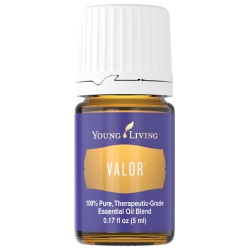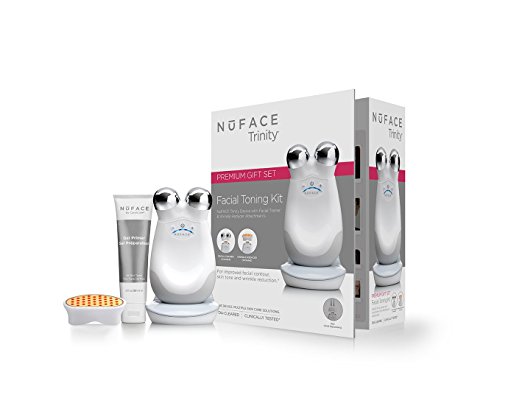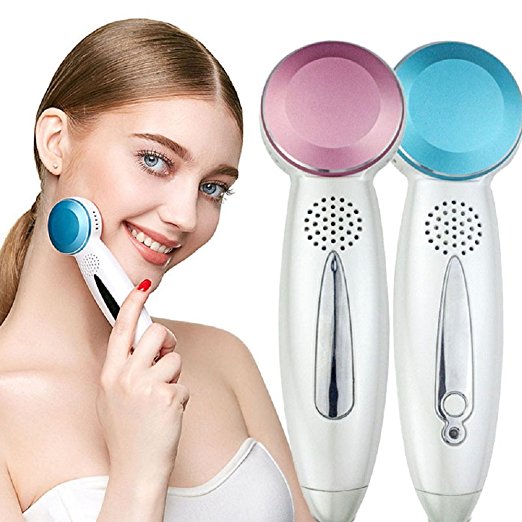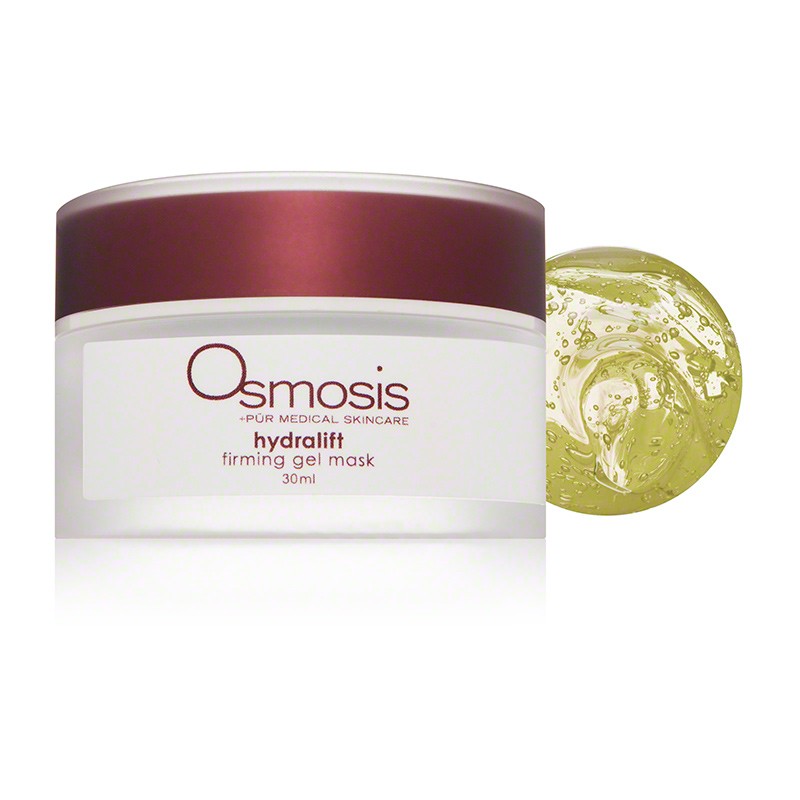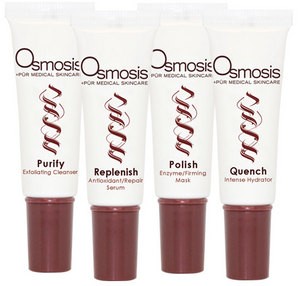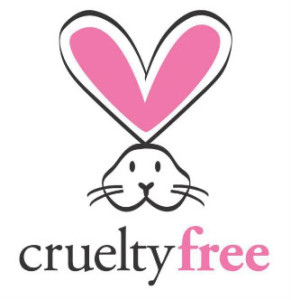Pores play a vital role in skin physiology. After all, without them we’d have nowhere for hair to grow out of, no method for skin oils to reach the surface, protecting skin from environmental dehydration, perspiration and oxygenation. Technically speaking, the pore is little more than the opening of the hair follicle onto the surface of the skin. The source of the hair follicle lies deep within the dermis. Midway up the dermal layer, the sebaceous oil gland empties into the hair follicle. Both skin oil (sebum) and the hair reach the surface through this tiny aperture. Wherever there is a hair, there will be a pore. As well as excreting wastes, the pores of the skin were thought to be the openings through which the skin breathed and absorbed ‘skin foods’ from masks, creams, lotions, aside from oxygen, making them even more important to the health of the skin. We now know that the dark tip of a blackhead is not dirt but is a build-up of dark melanin granules, and that the degree of pigment relates to the amount of general skin pigmentation, so it is absent from comedones of albinos and very dark in heavily pigmented skin.
According to Paula’s Choice This site is a great site to visit and purchase great products
http://www.paulaschoice.com/expert-advice/acne/_/struggling-with-enlarged-pores-andblackheads
How Do My Pores Become Enlarged?
Quite exclusively, hormones have the control to regulate the oil glands that produce the sebum (oil), which moves through the lining of each pore and the onto your face. With normal oil production, the oil easily flows through the pore lining and out of the pore, imperceptibly spreading over the skin’s surface.
The challenges arise when your oil glands make too much oil. This excess oil mixes with other substances (such as dead skin cells) in the pore to form a clog. This clog makes it difficult for the oil to flow freely, which causes the pore itself to enlarge.
Even though the pore enlarges to provide extra room for the oil to flow out, the oil still can become trapped (especially around the nose) by dead skin cells. Once this occurs and the material (oil and skin cells) at the end of the clogged pore is exposed to the air, it oxidizes, forming a blackhead.
from http://www.cosmeticsandskin.com
In the nineteenth century, no advice on how to achieve a flawless complexion would be complete without mentioning the skin’s pores – closing them, preventing blockages and clearing them when they became clogged – the most visible manifestation of problems being the appearance of unsightly ‘blackheads’. The need to clear the pores was more than cosmetic. Pores were regarded as openings through which a good deal of ‘waste and refuse’ left the body so a person’s overall health could be affected if they were blocked.
The healthy condition, you are aware, not only of the skin itself, but of the whole body, depends on the healthy state of the pores or moisture-pipes, by which a large proportion of the waste and refuse of the body escapes in the form of insensible perspiration. Now, this refuse that comes to the skin, with the intention of obtaining a free passage by the pores, must be stopped there, if the pores are shut or obstructed, and, of course, an eruption will be the natural consequence, if the refuse, as is often the case, is not carried inwards again by the absorbents, in which case, an internal problem will be the result.
As well as excreting wastes, the pores of the skin were thought to be the openings through which the skin breathed and absorbed ‘skin foods’.
Pores
Unfortunately, when early beauty specialists referred to skin pores they sometimes conflated the openings of two fundamentally different skin structures – sweat glands and sebaceous glands – and this meant that they often mixed up the functions of each.
On every square inch of the skin there are hundreds and hundreds of little openings, through which the perspiration finds an exit, or in which the hairs are planted. These openings lead to short canals which descend into the true skin. Besides the perspiration, the sides of these canals secrete a fatty substance which gives to the skin its oiliness and smoothness.
Despite what may have been thought in the past, the pores of sweat glands are generally too small to be seen with the naked eye and usually do not become blocked. This contrasts with the larger, funnel-shaped openings of the sebaceous glands which are often visible in places such as the nose and cheeks.
The conflation of sweat and sebaceous glands was by no means universal and by the twentieth century most beauty experts had concluded that the oily, sebaceous glands were the main problem when it came to enlarged pores, and that blackheads formed when dirt and grime collected in these pores. Cleansing the skin was therefore considered to be the most important part of any blackhead treatment.
The face has innumerable oily follicles which are provided to keep the skin soft and flexible. If these are for any reason stimulated to too great activity, they make the face shiny and greasy. If the skin is not thoroughly cleansed when the face is washed, the dirt accumulates in these little follicles and by its presence stimulates each gland to renewed activity. Little by little the gland becomes distended and a tiny plug is formed, which, if it remains, will cause still further irritation and will result in a pimple. It will thus be seen how great is the necessity of keeping the face perfectly clean, in order to prevent the formation of blackheads.
We now know that the dark tip of a blackhead is not dirt but is a build-up of dark melanin granules, and that the degree of pigment relates to the amount of general skin pigmentation, so it is absent from comedones of albinos and very dark in heavily pigmented skin
Treatments
Early beauty experts often talked about ‘clogged’, ‘stagnant’, ‘sluggish’ or ‘congested’ skin when discussing the subject of blocked pores and blackheads. This reflects the belief that clogged pores were a symptom rather than a cause, and that the condition would only be resolved in the long run by improving the skin tone, getting the pores to function properly, and/or boosting the general health of the skin.
Coarse pores are the result of a lack of tone in the skin. The pore openings are distended by effete matter which the pores are too sluggish to expel completely. For this reason, thorough cleansing is necessary to correct this fault and prevent blackheads and infections from developing in the languid pores.
(Parker, 1932, p. 25)
The thinking behind this viewed the relationship between the pores and the skin as two-way. The build-up of wastes in the skin caused by ‘clogged’ pores could ‘stagnate’ the blood circulation and make the pores ‘sluggish’, thereby making the skin ‘congested’ and exacerbating the original problem, making it even more difficult for the pores to function properly. Consequently, cleansing was often accompanied by massage or patting to improve skin circulation, and/or astringents or ice to improve the tone of the skin, stimulate it and close pores. In addition, exfoliation – through the use of a rough towel, flesh brush or an exfoliant like almond meal – was frequently recommended to deep cleanse the skin and remove any surface impediments to the free flow of material from the pores.
Astringents primarily concern the pores of the skin. The pores are the openings of the sweat glands—very often too obviously open. When the pores are enlarged, the skin becomes coarse and invariably suffers from bad circulation of the facial blood vessels.
… To combat this defect, begin by making certain that the pores are free from excretions and foreign matter. Before retiring at night be especially careful to give the face a thorough cleansing treatment. …
To improve the circulation, follow the cleansing process with a stimulating treatment by patting the fleshy parts of the face with cool water or astringent.
It is essential to keep the pores free from dirt and dust during the day. Continued applications of soap and water are apt to aggravate the inherent coarse texture of a skin suffering from enlarged pores, aside from the ingredients of most soaps are clogging to the pores, not to mention the wrong PH. The use of a good exfoliator and an astringent is a must.
The enlarged pores are most obvious on the cheeks and around the nose. Apply the astringent generously but not too vigorously to the nose, and more energetically to the cheeks.
Besides stimulating the activity of the pores, astringents and cold water assist the muscles to contract. This contraction makes the skin firmer and helps the glands to perform their duties of cooling the body and lubricating the skin.
(Joslen, 1937, pp. 41-43)
As well as improving the over-all tone of the skin, many beauty writers erroneously thought that astringents would have a direct effect on pores which they believed were opened and closed by muscles that could also be toned or tightened.
Nowadays we are all at least superficially educated in the principles of beauty culture and know enough to keep our skins clean externally; it is, therefore, palpable that the clogging of the pores which produces what we call blackheads is from within rather than without. The pores of the skin are tubes which are intended to carry off acids, moisture, etc., etc., from the body, and their orifices have the power of opening and shutting.
(Chrysis, 1928)
Blackheads
Along with cleansing, massaging and toning the skin to control enlarged pores, specific treatments for blackheads, if they were present, were included in beauty treatments.
Extractions: Although some beauty writers advised against it altogether, if the ‘dirt’ in the blackhead could not be removed by cleansing, then pressure could be applied to the skin to ease the blackhead out. Given the possibility that the skin might be bruised during this treatment many beauty experts recommended the use of a comedone extractor or a watch-key instead of the finger nails witch can bruise or scar the skin.
If they are too large to yield to such treatment, then they can be removed by a watch-key or a comedone extractor, which is very like a watch-key. It should be placed carefully, so that the Comedone comes in the centre of the aperture and then firm and gentle pressure should be made, until the little worm-like contents of the sebaceous follicles are expressed. One should avoid irritating the skin too much; if there are very many blackheads and they are close together, it is better to wait a day before repeating the process.
Steaming: Before extracting blackheads it was common practice to first steam the face, supposedly to open the pores and soften the plug so that extraction would be easier.
The general method is to steam the face until every unimpeded pore is in an active condition, and the contents of the inactive ones are softened. Then gently press the spots with the end of a hollow watch-key which has a broad rim around the opening, when the little plugs will come to the surface with no surrounding irritation. The bare finger-nails are said to bruise or greatly irritate the skin. Anoint each spot as soon as it is cleared with an astringent like witch hazel.
The warm humidity from steaming may also increase perspiration and stimulate blood circulation. As the body’s natural cooling system, sweat consists mostly of water, but it’s also mixed with a small amount of your body’s wastes and toxins so that you can wash them away. And increasing your circulation in your facial skin can help to give you a warm, colorful glow. However, if you have certain skin conditions that are aggravated by sweating or increased blood circulation, such as rosacea or a fungal infection, then facial steaming may do more harm than good for you [sources: American Academy of Dermatology].
Those that preached against this practice generally did so because they thought that steaming relaxed the skin, causing it to stretch – the opposite effect to that produced by an astringent – which led to enlarged pores and wrinkles; or that it robbed the skin of oils leading to premature aging.
Steaming your face might seem simple enough, but there’s a right way and a wrong way to go about it.
Face Steaming Tips
If you’re ready to try facial steaming, the first thing you need to look out for is the water’s temperature. Ideally, most professionals use temperatures at about 110 degrees Fahrenheit (43 degrees Celsius). If you aren’t cautious and get too close to the hot steam, you could scald your skin, which can leave behind a scar. Slowly get closer to the steam, but don’t get too close — some professionals advise getting no closer than 12 inches (30 centimeters), but others say 18 inches (45 centimeters) is close enough. If you let too much heat get near your skin, the increased blood flow could lead to broken capillaries under your skin. Knowing the potential dangers, you’re ready to start the steaming. First, wash your face so that your pores are free to release any impurities without built-up dirt or makeup blocking the way. Prepare your facial steaming equipment as directed if you have any, or if not, boil some water and pour it into a bowl. Use a towel as a tent for both the bowl and your head. Lean your face over the steam for about five to seven minutes. Many profesionals choose to add in different herbs or essential oils — such as lavender, rosemary, peppermint or ylang-ylang.
Fixing the Problem: What to Do & What to Avoid
1 Stop using skin-care products that clog pores or cause your oil glands to produce more oil. You must avoid products that are too emollient (meaning thick or greasy creams) or that have a creamy texture, as many moisturizers do. If you have oily skin, creamy, emollient skin-care products will lead to clogged pores.
2 Avoid products with drying, irritating ingredients. Irritating products stimulate more oil production directly in the pore. Learn how irritating skin-care ingredients make your oily skin oilier!
3 Use only gentle, water-soluble cleansers and avoid bar soaps. Drying cleansers hurt the skin’s healing process, making red marks from blemishes last longer. If a cleanser causes irritation, it can stimulate more oil production. Regarding bar soaps: The ingredients that keep bar soap in its bar form can clog pores.
4 Use a salicylic acid (BHA) exfoliant, in gel or liquid form, with absolutely no extraneous irritating ingredients. Gently exfoliating skin with a BHA can both remove excess skin cells from the surface of the face (so they don’t build up in the pore) and exfoliate inside the pore (to improve its shape), allowing for a more even flow of oil. Antiaging bonus: This step also reduces wrinkles and builds collagen! BHA is preferred to AHAs (alpha hydroxy acids, such as glycolic acid) because BHA exfoliates not only on the skin’s surface but also inside the pore, where the clogs form. Paula’s Choice BHA products get rave reviews; click here to find the best one for your skin type.
5 Absorb excess oil. Clay masks can be great at absorbing oil and are an option, as long as they do not contain other ingredients that are irritating. Some cosmetics companies also Pores and black heads offer oil-absorbing products to be worn under makeup; these are definitely worth trying to absorb oil all day long. A oil-absorbing product like Shine Stopper Instant Matte Finish with Microsponge Technology is an excellent choice, and you can visit Beautypedia Reviews to find other options.
6 Improve cell production to help the pore function more normally. Effective products for all skin types are prescription retinoids, such as Retin-A, Tazorac, Avita, Renova, and Differin. These can be used by themselves or with a BHA product. Research has definitely established that Retin-A, Renova, and Differin have positive effects on the way pores function, and you should consider these products for very stubborn cases or when blackheads are accompanied by breakouts. Retinoids have anti aging benefits, too, so they’re great for those struggling with blackheads, large pores, and wrinkles.
7 Use products loaded with antioxidants and cell communicating ingredients to help heal skin and reduce wrinkles. Giving skin the important ingredients it needs to look and be healthy is critical, but the trick for those with blackheads and large pores is to use only products with a gel, liquid, or very thin serum texture. A well-formulated toner may be all you need twice a day to take care of this need.
Home remedies for blackheads
from: http://everydayroots.com
Clay Time
Bentonite clay is a mineral rich healing substance that has been used for centuries to treat a number of ailments, chiefly skin related. Because of its molecules “electrical charge” when wet, it does an amazing job of drawing out oils or other impurities locked in your pores. When you apply the mask your skin gets to drink in all the minerals, while the clay simultaneously draws out the blackhead. It also helps with circulation, which helps with overall skin tone and health. You can mix the clay with water or apple cider vinegar, maybe sticking to the former if you have dry or sensitive skin. Experiment! This mask will make you feel like your face is tightening as it dries. Whether or not you let it dry entirely is up to your preference-I tend to let it dry most of the way and then just moisturize afterwards, but other people find that dries their skin out and irritates them.
You will need…
-1 tablespoon (roughly) bentonite clay
-Water or ACV
Directions
Mix in enough water or ACV to form a paste that is thick but still applicable. Using clean fingertips cover your face with a thinner layer of paste and let it sit for 10-25 minutes, depending on how long you are letting it dry. Rinse off with lukewarm water and moisturize as usual.
Egg White Mask
Egg whites form an easy mask that can be used to temporarily tighten pores, thus reducing chances of future blackheads, and will also remove current blackheads. Egg whites are also rich in nutrients for your skin, and are a little less drying than some other home remedies for blackheads.
You will need…
-1 egg
-Facial tissue or toilet paper
-A small bowl
-A clean towel
Directions
Separate the yolk from the white and rinse your face. Pat your face dry and then apply a thin layer of egg white over your skin. There are two ways to go from here-
Place a strip of facial tissue or toilet paper over the wet egg white, being sure to press it onto your face gently. Allow the first layer to dry. Carefully apply a second layer of egg white over the tissue (try dipping your fingers in it and dabbing it on so the tissue doesn’t slide around a bunch. Let this layer dry as well before applying a third (optional.) When the mask is dry, your face may feel tight-this is supposed to happen. Peel the tissue off, and then gently wash your face to remove any residue. Pat dry and moisturize as usual.
Alternatively, you can leave out the tissue and simply apply 3-5 layers of egg white, being sure to let each layer dry in between applications. If you do not let the layers dry, this will not work!
Honey and Milk Pore Strips
Milk and honey both have properties that are good for skin. Honey has antibacterial properties, and the lactic acid in milk is said to help keep skin soft and supple. The main purpose here though is, when mixed together, to act as an adhesive.
You will need…
-1 tablespoon of organic raw honey
-1 teaspoon of milk
-Clean strip of cotton
Directions
Mix 1 tablespoon of organic raw honey with 1 teaspoon of milk. Heat it for 5-10 seconds in the microwave, and then mix again to blend thoroughly. When it’s a comfortable temperature, apply a thin layer over blackheads, and then gently but firmly pat a strip of dry, clean, cotton onto it. Let dry (to play it safe, wait at least 20 minutes) and carefully peel the strip away. Rinse with cold water and moisturize as usual.
Cinnamon & Honey Strips
It sounds like a delicious candy, but cinnamon and honey make a wonderful combination for getting rid of blackheads. Again, the anti-bacterial agents in the honey can help keep away bacteria that are causing acne (not necessarily blackheads, but still a bonus) as well as act as the adhesive to pull out anything clogging your pores. Cinnamon improves circulation, and this increased blood flow gives your skin a smooth, healthy, glow.
You will need…
– 1 part cinnamon powder
-1 part organic, raw, honey
-Clean strips of cotton
Directions
Mix the honey and the cinnamon together until you have enough paste to cover the affected area. Apply in a thin layer over the blackheads and then press a strip of clean cotton over it. Let it sit for 3-5 minutes before removing and rinsing your face. Don’t forget to follow up with a moisturizer!
H2O Daily Blackhead Treatment
While pore strips and face masks work wonders, they can only be used several times a week to avoid drying your skin out to much. If you want to do something daily to prevent your blackheads, a gentle rinsing with water 1-2 times a day is the way to go. This keeps things that can make your pores appear larger-such as excess sebum and dead skin-flushed away and your pores clear. Be sure to use a light moisturizer when you are done to prevent your skin from trying to produce excess sebum to accommodate for dryness.
You will need…
-Fresh water
-A clean fluffy towel
-Moisturizer
Directions
Twice a day splash your face with clean, fresh water. Pat dry with a soft towel and apply moisturizer as usual. I suggest doing this early afternoon (so you wash away anything that has built up in the first part of the day) and evening, but morning and evening works as well.
Toner for Tighter Pores
Since blackheads are caused by open, clogged, pores reacting to oxygen, it only makes sense that “shrinking” your pores down will help. Lemon juice is just the astringent substance needed to get the job done, however, it can lighten skin temporarily and it does make you sensitive to the sun, so load up on sunscreen if you plan on using this method in the summertime. If you have sensitive skin, try diluting the lemon juice with water first.
You will need…
-1 lemon
-cotton balls
-A small bottle
Directions
Rinse your face and pat dry. Squeeze the lemon juice into a small bottle and then use just enough to dampen a cotton ball. Apply to affected areas 3-4 times a week, at bedtime. When you wake up, rinse your face with luke-warm water and apply moisturizer as usual. Store the rest of the juice in the refrigerator for up to a week. Be aware-the juice can sting sometimes!
Some great products for pores. Click on the image to purchase product.
Eminence Organics Yam and Pumpkin Enzyme 5% Peel
Eminence Organics Blackberry Pore Refining Serum
Eminence Organics Raspberry Pore Refining Masque
TRIA Skin Perfecting Blue Light
Foreo LUNA
